Landscape with Bear
closeLandscape with Bear is a project developed collectively across eight months by fourteen individuals: we, the participants of De Appel Curatorial Programme, along with three artists, an archeologist, two designers, an architect and a writer. The project progressed through a series of meetings with and alongside the Collection (Unintended), a group of artworks, props, objects and documents that make up a small part of De Appel’s extensive archive. Its name reflects the fact that De Appel is not a traditional collecting institution and no one explicitly set out to build this collection. The objects gathered over the course of many years, through chance and the cumulative subjective decisions of a combination of individual agents, bureaucratic structures and forces of self-organisation, are unified only by the fact that they do not fit into the existing categories of the archive. This lack of criteria is reflected in the eccentricity and eclectic nature of the collection. The objects existed as a group but were not publicly named as a Collection (Unintended) until 2017. The Collection (Unintended) is largely uncatalogued and therefore lacks the taxonomies, hierarchies and art historical narratives typical of traditional museological collections. The project sought to explore whether this idiosyncrasy might offer alternative modes of access to, or ways of producing knowledge from, a collection. From a collection that is fragmentary, uncertain and unstable, there is potential to create a consonant kind of knowledge: one that constantly reinvents its alliances. This collection called for different outlooks, expertise, knowledge and diverse perspectives beyond an art historical approach.
Landscape with Bear, published by De Appel, 2019
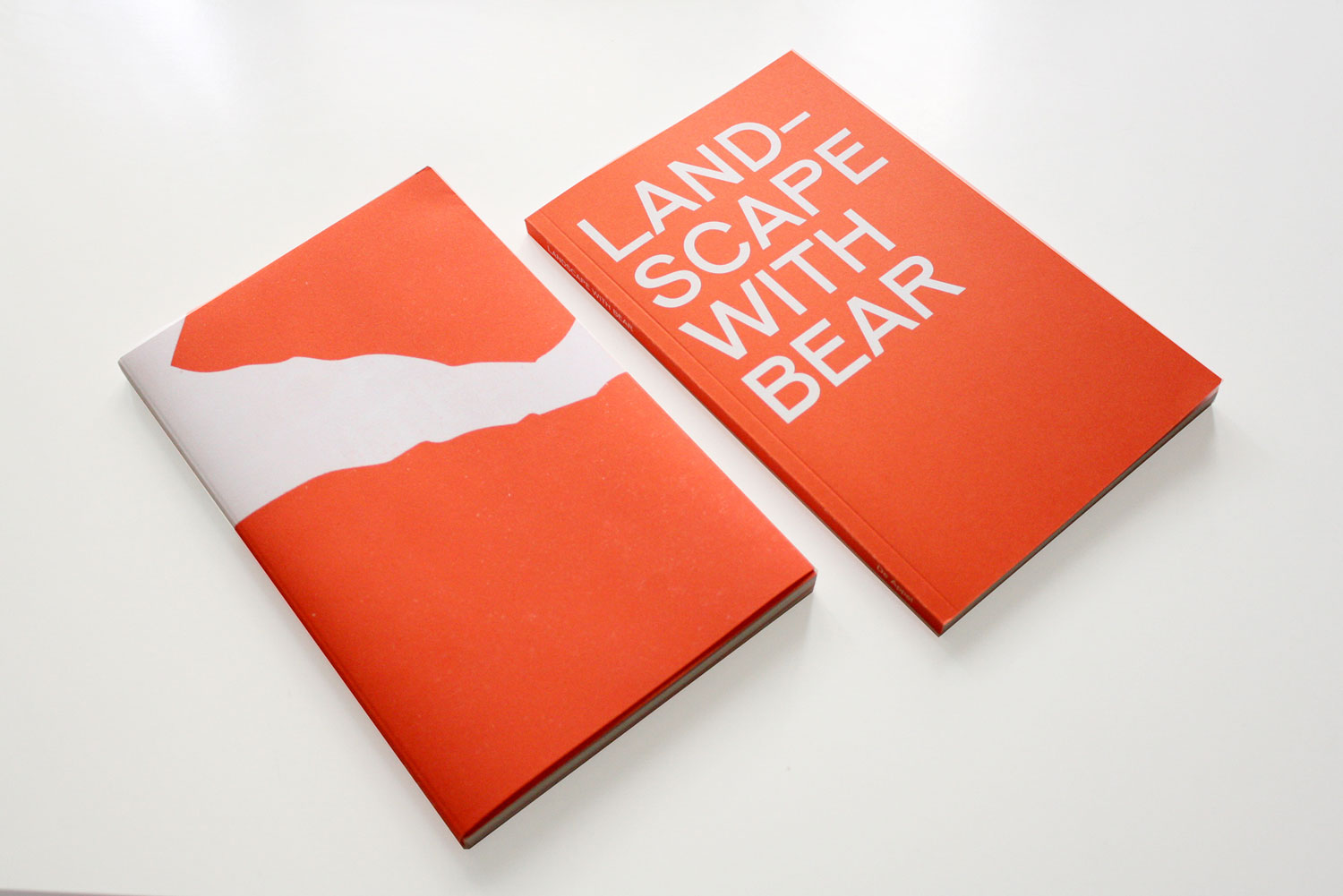
De Appel Curatorial Programme is premised on collaboration. Six applicants are selected and asked to collectively devise a project, which must be delivered within ten months. The question immediately arose as to how tensions between divergent viewpoints could be managed and accommodated without resulting in homogenisation or bland consensus. Landscape with Bear is a project that lingers on this question. It is not largely focused on outcomes, but rather on processes: the ways in which we might collaborate across communities of practice without sacrificing complexity. In the case of this project, the Collection (Unintended) became a way to negotiate this collaboration. It was an object of immediate fascination, although each of us was drawn to it for different reasons. It presented a case study, a microcosm that “housed” a multiplicity of subjectivities and forced us to move beyond institutional critique or an insular focus on curatorial practice. Therefore, we extended an invitation to people working in other fields, who might bring their own knowledge, methods and insights to the project. The Collection (Unintended) possessed the features of boundary objects:
De Appel Curatorial Programme 2018-19 participants. Photo Boris Potsma
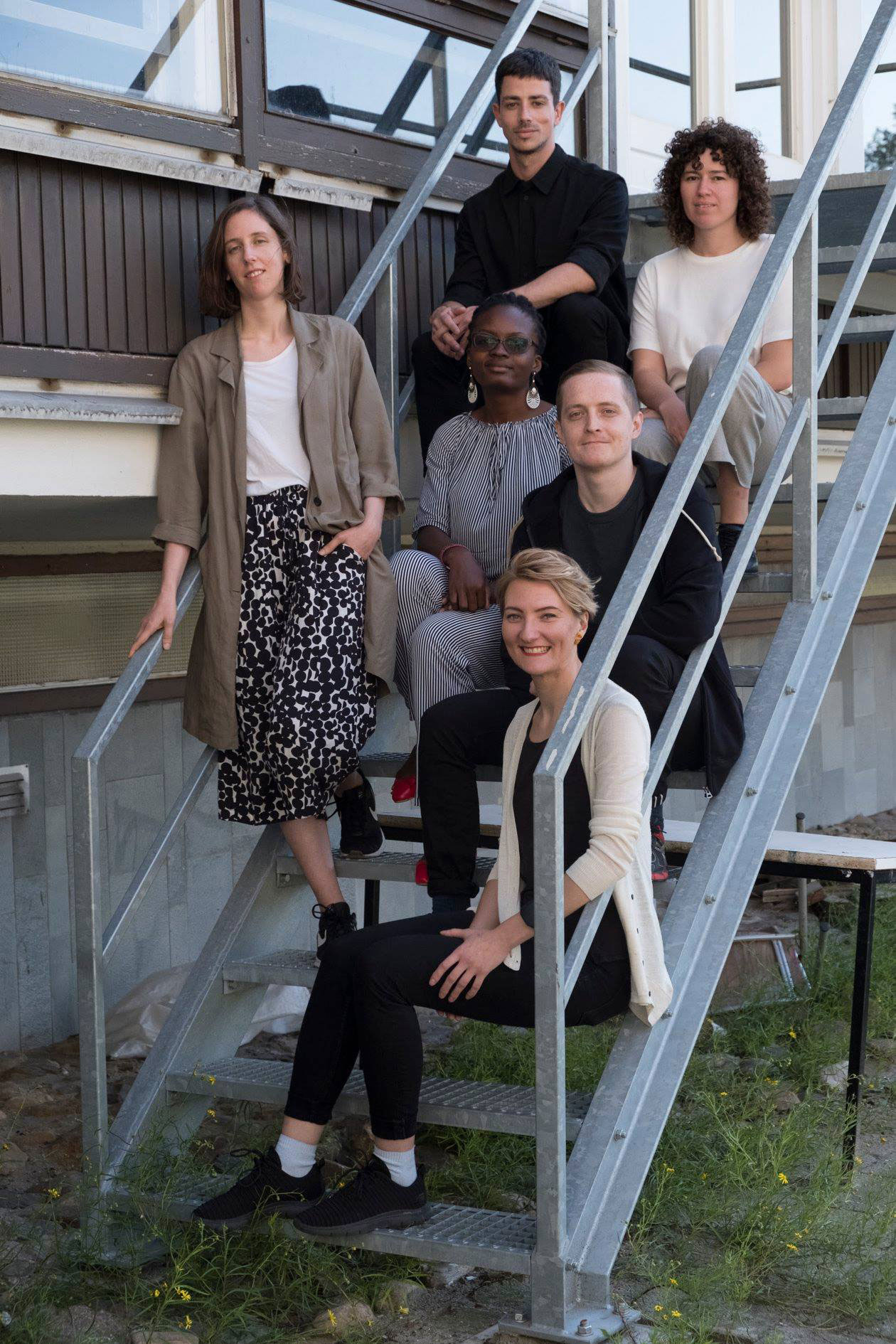
...both plastic enough to adapt to local needs and constraints of the several parties employing them, yet robust enough to maintain a common identity across sites. They are weakly structured in common use, and become strongly structured in individual-site use. They may be abstract or concrete. They have different meanings in different social worlds but their structure is common enough to more than one world to make them recognizable means of translation. The creation and management of boundary objects is key in developing and maintaining coherence across intersecting social worlds.1
This is not to say that the collection was merely instrumentalised as a tool for cooperation between the individuals taking part in the project. Rather, it became clear through the course of this project that people and objects cannot be said to be separate entities that pre-exist their interactions, but rather ones that emerge as individuals only through, and as part of, their entanglements. This was demonstrated repeatedly- as we sought to be affected by the collection, our attention began to restructure it.
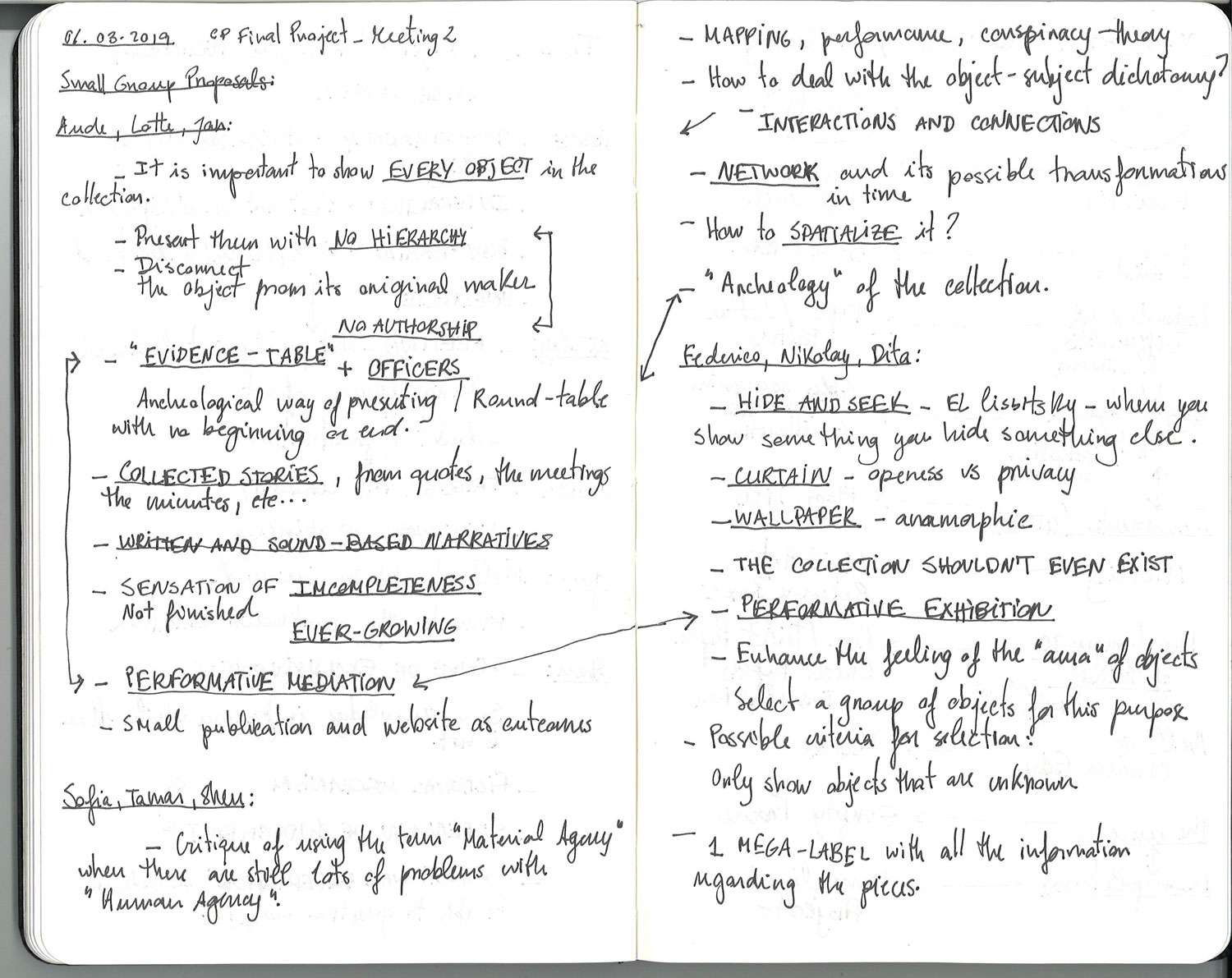
Boundary objects are an established way through which divergent viewpoints can be negotiated. But this management also requires juggling, on-the-spot translation and the flexibility to abruptly adjust perspectives. These actions are not so easily codified and reproduced as a structure or curatorial methodology. Instead, we have attempted to reflect these processes in a publication by reproducing a small selection of the minutes of meetings, transcriptions of audio recordings, notes, maps and diagrams that we generated through this project. We have also included images from the outcomes of the project. These outcomes- an exhibition, performance and publication- were not predetermined, but arose from shared meetings and discussions with participants. The thematic concerns of these outcomes reflect this process. There is a strong focus on how objects can inhabit multiple contexts at once and have both local and shared meanings.

The exhibition presented items from the collection in a single continuous landscape that blurred the line between art object and display. It suggested the possibility of experiencing objects not as distant and static entities, separate from other animate bodies, but as part of a landscape that comes into being as we move through it. Through interwoven narratives of sound, space, fiction, performance and objects, the exhibition became topographical: it created uncanny proximities and unexpected associations as a starting point for investigation. The landscape was composed of different times and presences, with the sonic augmenting, or doubling, of the physical landscape. A poem, fragments of theoretical texts and the noise of the archive filled the air and were felt as vibrations in the body. In working with a collection that is live and mutable, the exhibition can be reconsidered beyond the moment of encounter.
Landscape with Bear, exhibition view, De Appel, Amsterdam, 2019. Photo Konstantin Guz
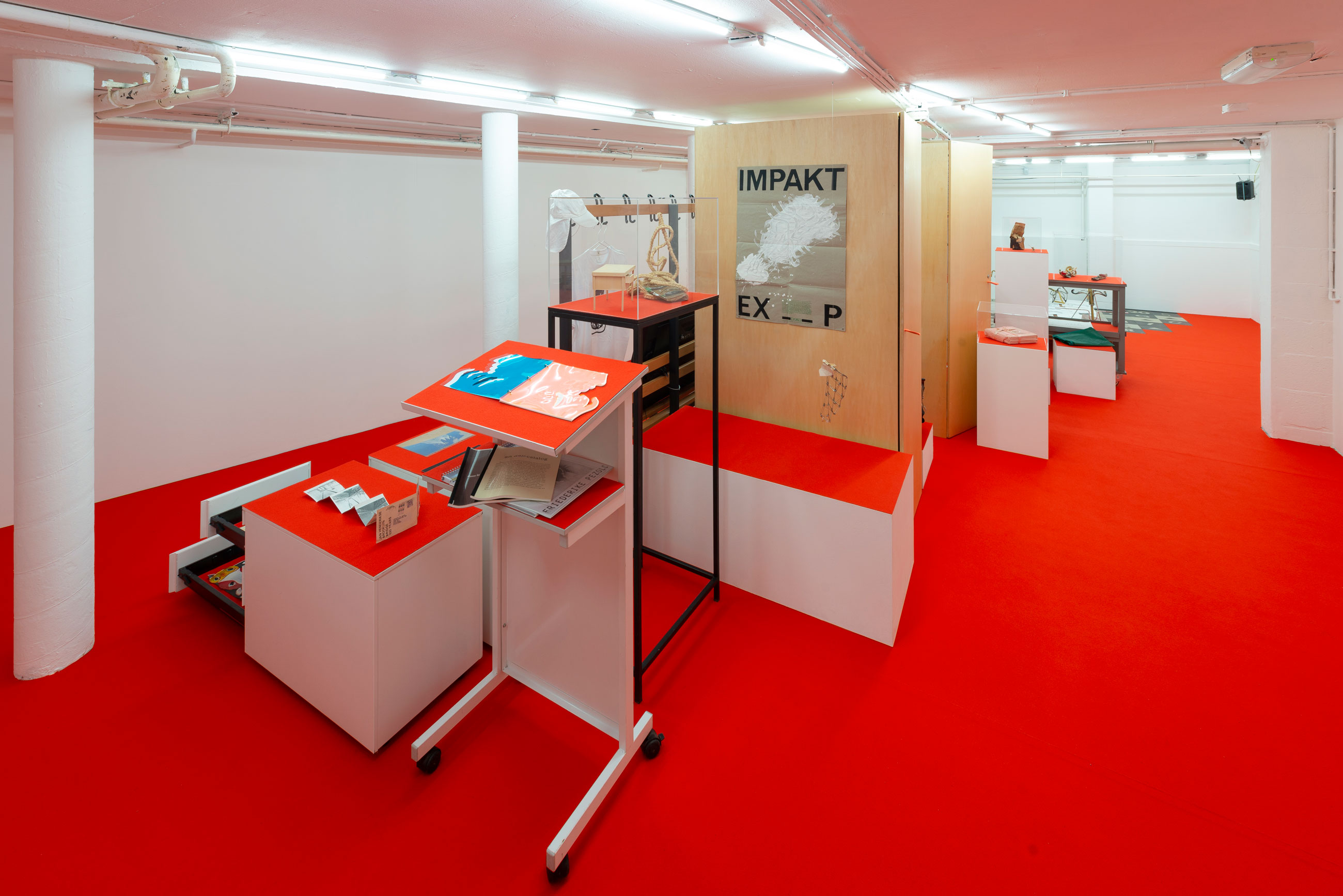
The publication is meant to be a continuation of the project beyond the exhibition space. It registers the group meetings, each of which was documented in various forms: photographs, audio recordings and minutes. Extracts of these materials were selected and edited to be included in this publication in order to reflect on the methodology used. Every step of the process was woven into one continuous landscape: our first face-to-face encounter with the objects; our initial reactions, first thoughts and desires for this project; our mind maps; our collective discussions, group work and individual presentations; as well as our floorplans, notes and drawings. During and after the process of developing the project, critical reflections and new “leftovers” were produced: an interview with Aram Lee, a post-script of Shen Xin’s performance, a series of drawings by Jan Hüskes and an essay by Miguel John Versluys. In addition to these contributions by participants is a reflection by Rachael Rakes. Together, these build a publication that brings together different conceptual worlds, material practices and interdisciplinary dynamics not necessarily within a unifying framework, but as an echo of an explosion of activities and ideas. This publication does not relate isomorphically to the project as a mere confirmation of its meaning, but rather intensifies the kind of working and thinking that unfolded in the preceding eight months. In responding to the collection, we sought to leave room for it to influence us through its form and materiality. In the same way, we remain open the possibility that this publication may have effects beyond our intentions.
Landscape with Bear, published by De Appel, 2019
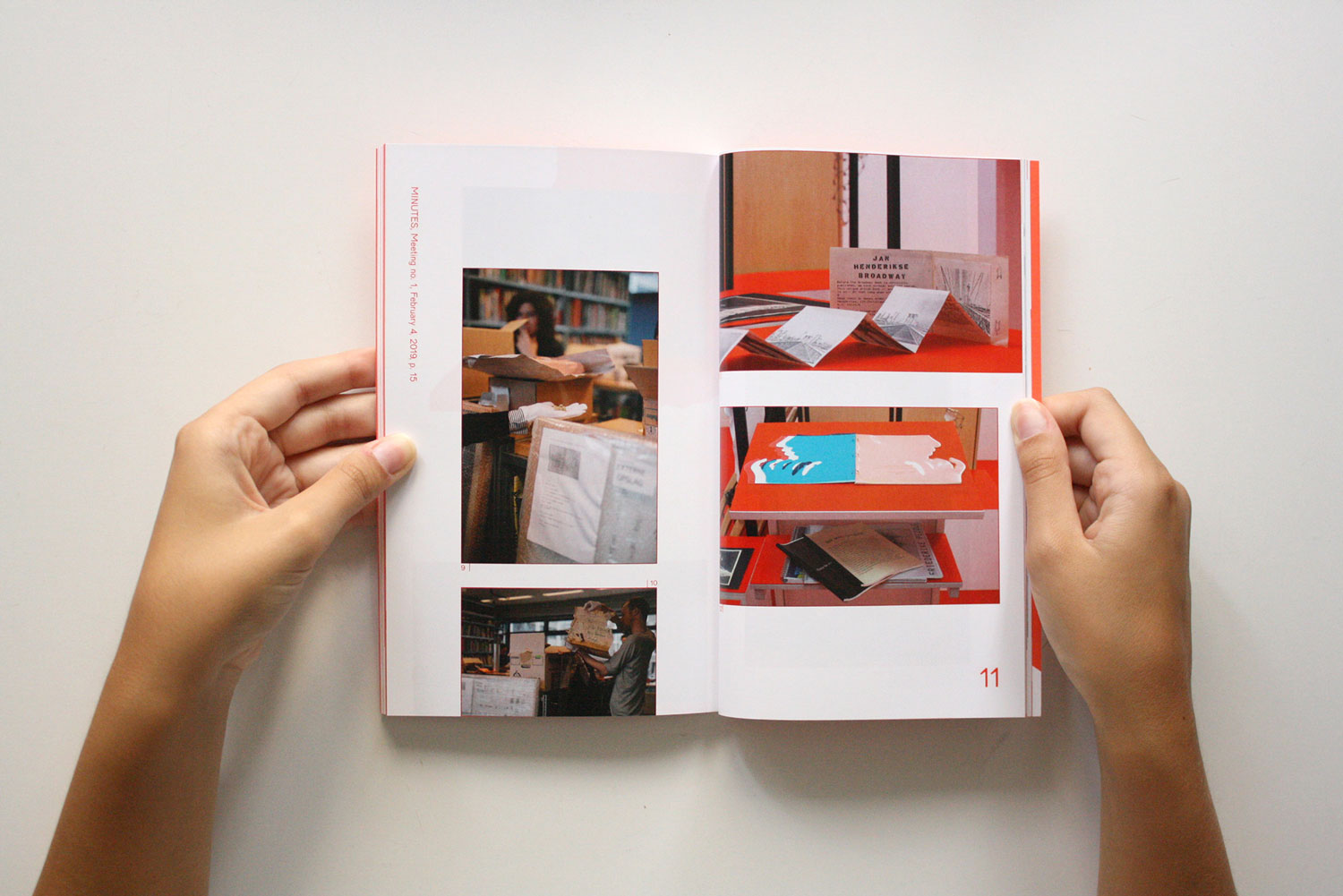
Curatorial text for Landscape with Bear, De Appel, Amsterdam.
-
Star, S. L., and J. Griesemer. 1989. Institutional ecology, ‘Translations’, and Boundary objects: Amateurs and professionals on Berkeley’s museum of vertebrate zoology. Social Studies of Science 19:387-420.